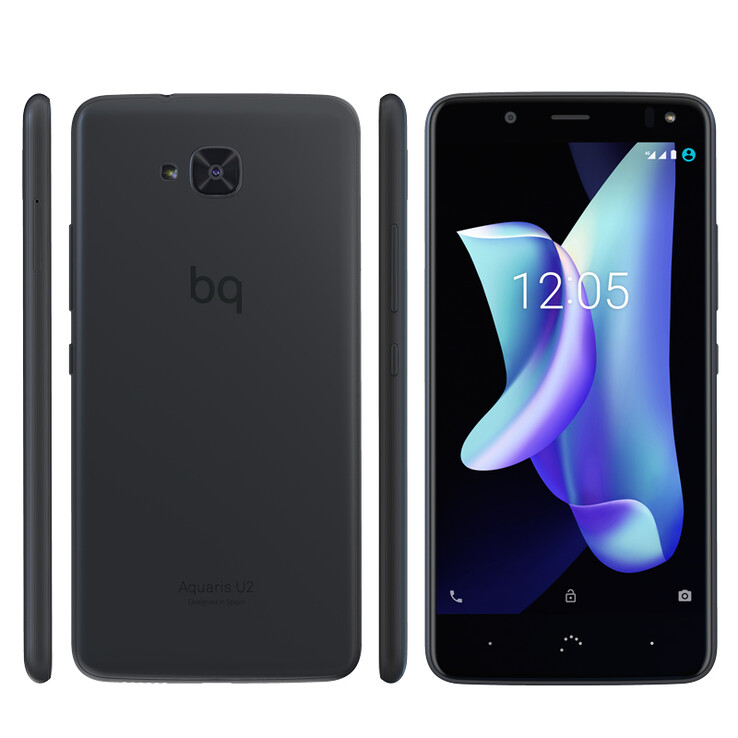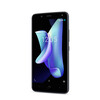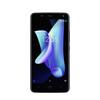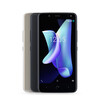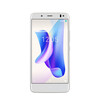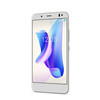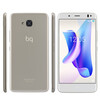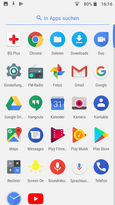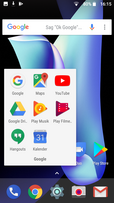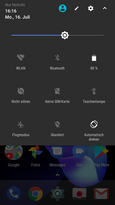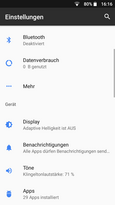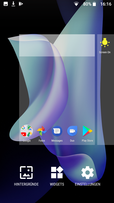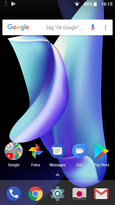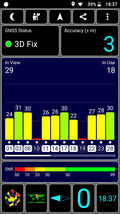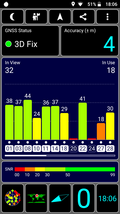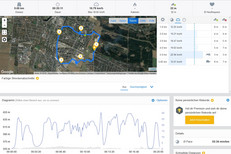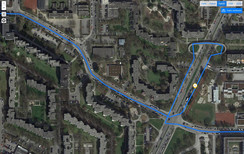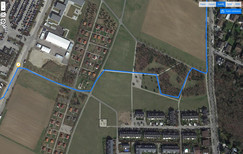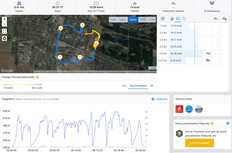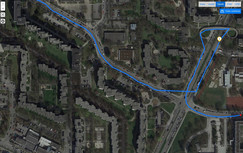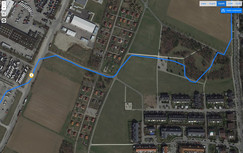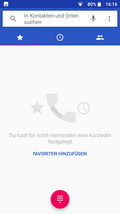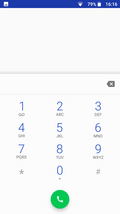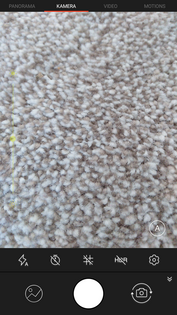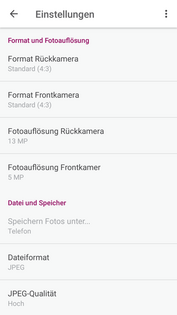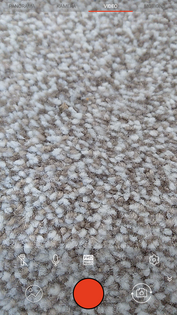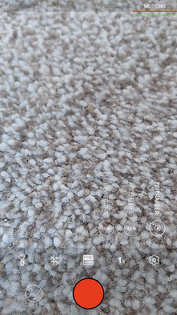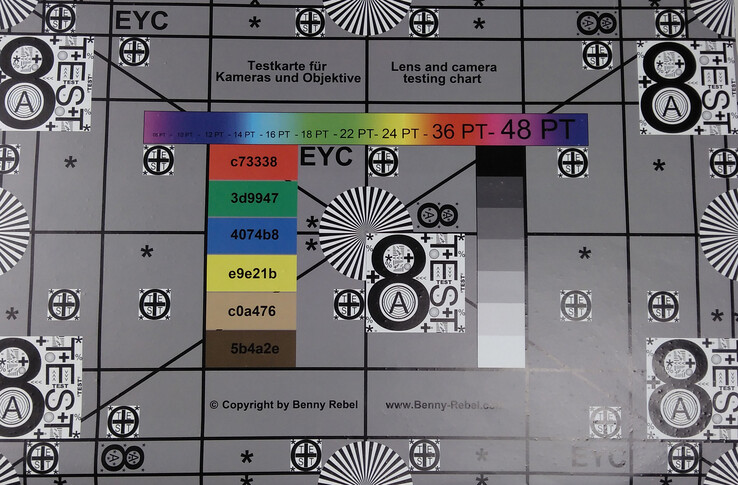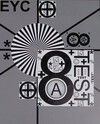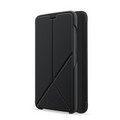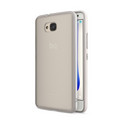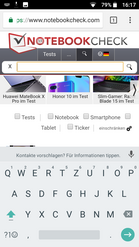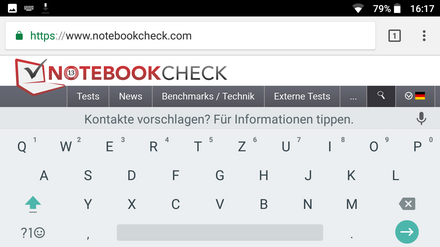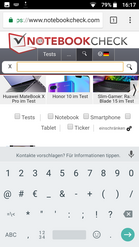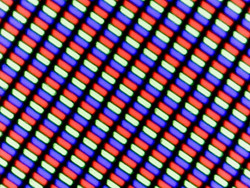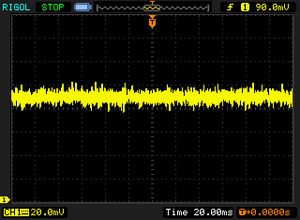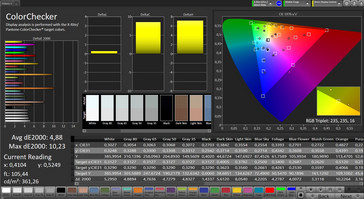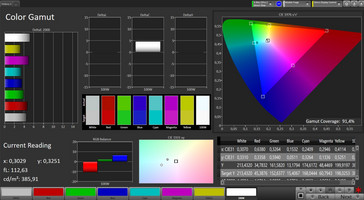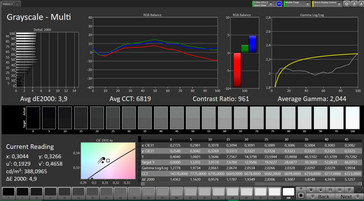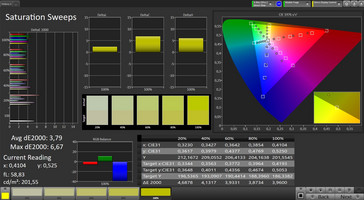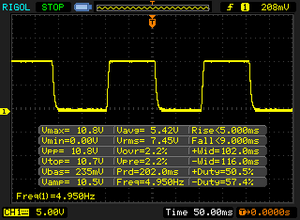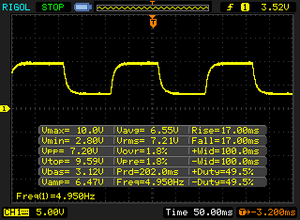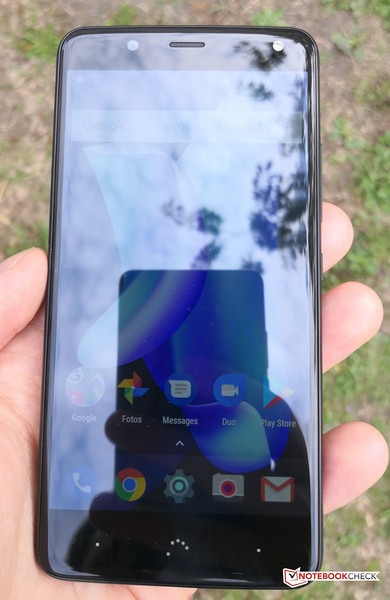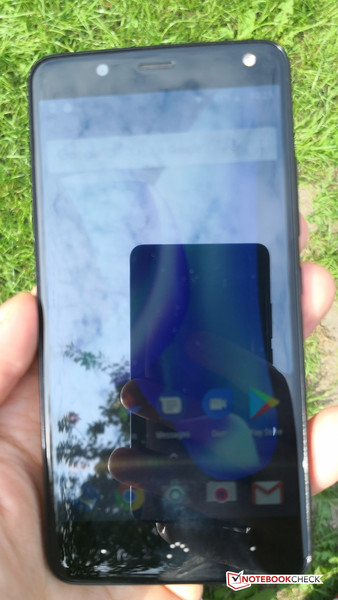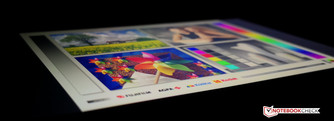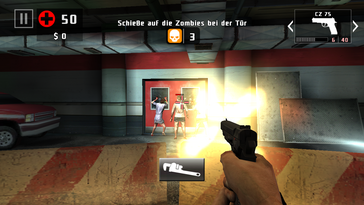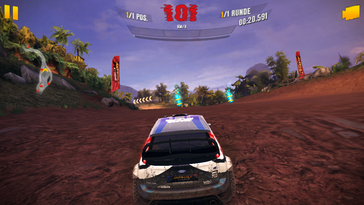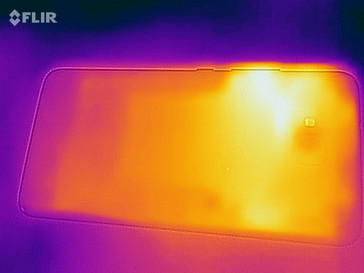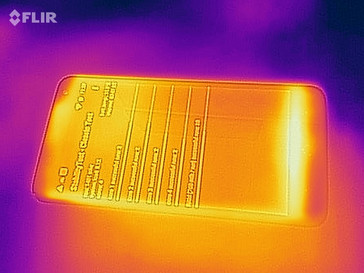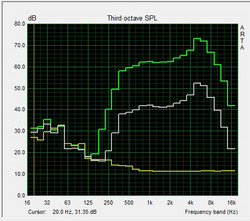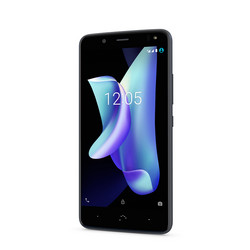BQ Aquaris U2 Smartphone Review
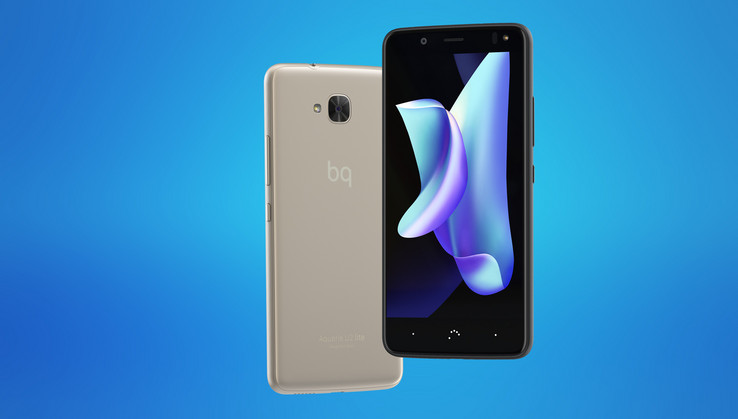
In September last year, the latest U-series models of the Spanish smartphone manufacturer BQ were officially introduced for the German market. The Aquaris U2 is the Aquaris U2 Lite's big brother. Both smartphone models have a 5.2-inch IPS display with 1280x720 pixels, a 3100 mAh battery including Qualcomm's Quick Charge 3.0, as well as a main camera at the phone's rear with phase detection autofocus and a resolution of 13 megapixels for the Aquaris U2. Furthermore, a midrange SoC by Qualcomm is installed. The BQ smartphone utilizes a Snapdragon 435 with 2 or 3 GB of RAM and 16 or 32 GB of internal storage.
The current street price for the Aquaris U2 is between 160 and 170 Euros (~$184 and ~$196), so it has already dropped by about 30 Euros (~$34) in comparison to the recommended retail price (200 Euros, ~$230). This places the low-priced mid-range device in a price sector in which competition is particularly fierce, so there are numerous alternative devices. Possible rivals for the dual-SIM smartphone that we used as comparison devices for our test include the Motorola Moto G6 Play, Alcatel 3X, Xiaomi Redmi Note 5A Prime, Honor 7A, and the Gigaset GS180. Even BQ itself offers an interesting alternative with the BQ Aquaris VS.
Case - The BQ Phone Has Broad Bezels
The Aquaris U2 series is available in the color options Carbon Black and Sand Gold. The front of the Aquaris U2 is made of 2.5D Dinorex Glass that transitions into the metal frame in a slight curve and is protected against scratches.
The 5.2-inch IPS display is framed at the sides by 3-millimeter bezels. The bottom and top bezels are relatively broad as well, causing a ratio of only 69% between display and device front.
The curved rear of the BQ Aquaris smartphone is made of plastic, which gives it a good grip. It has a somewhat cheap surface feel to it, though. Even in the price range of around 200 Euros (~$230), other smartphone manufacturers manage to do better in this area, especially considering the fact that the BQ Aquaris U2's rear can be pushed inwards with only a small amount of force.
Still, the build quality is decent enough for the price range. The volume and power buttons on the right side of the case have a good pressure point and wiggle only minimally.
Features
The BQ smartphone's internal eMMC storage has a capacity of only 16 GB, 11 GB of which is available to the user out-of-the-box. To mitigate the lack of internal storage capacity, the user can utilize a microSD card in addition, provided that the dual-SIM functionality is not needed. The integrated microSD slot supports the current standards SDHC and SDXC, and it supports storage media up to a capacity of 256 GB. However, these cannot be mounted as internal storage.
The smartphone comes with a 3.5 mm audio port and an LED for notifications. The Aquaris U2 lacks a feature to unlock the phone via biometric identification, though.
Wi-Fi Direct and Miracast are available for wireless image transmission of the screen content. Peripherals, such as an external keyboard or a USB stick, can be connected with an OTG adapter via the micro USB port (2.0 standard).
Software - Not a Lot of Bloatware on the BQ Smartphone
The Aquaris U2 is delivered with Google's operating system Android in the version 7.1.2 Nougat. According to the manufacturer, an update to Android Oreo 8 is planned for 2018. The security patch layer on our test device is rather up to date with patches from June 2018.
The system software is very similar to vanilla Android. Overall, the Spanish manufacturer's user interface is strongly reminiscent of stock Android. Other than some minor visual adjustments, BQ equipped its mid-range smartphone with only very few additional software features, such as gesture control.
Communication and GPS - Fast Wi-Fi with the BQ Smartphone
The Aquaris U2's integrated WLAN module supports the IEEE 802.11 standards a/b/g/n/ac. The transfer speed of about 250 Mb/s we measured between the BQ smartphone and our reference router Linksys EA 8500 is really good for the price range and almost unrivaled. The reception is good in everyday use and the Wi-Fi signal is stable. The attenuation of -47 dBm within close proximity to the Router (Telekom Speedport, W921V) is relatively high, though.
The Aquaris U2 supports up to two nano-SIM cards at the same time. The BQ smartphone accesses the mobile Internet with up to 300 MB/s download speed, thanks to the X9 LTE modem - this applies to both SIM slots. Given the low price, the frequency coverage is acceptable.
Bluetooth in the current version 4.2 is available for wireless communication. An NFC chip for near field communication is installed as well.
The BQ smartphone supports the satellite systems GPS, GALILEO, and GLONASS to locate positions. Outdoors as well as indoors, the satfix happens after only a short delay of less than a minute with an accuracy of about three to four meters.
To assess our test device's location accuracy in practical use, we recorded a bike track with the smartphone and with the professional navigation system Garmin Edge 520 as comparison device simultaneously. The results of the low-priced mid-range device and the professional navigation device differ by about 240 meters, with an overall track length of over five kilometers. The deviations of the GPS module are relatively high but still acceptable for a device in this price range.
Telephone Functions and Voice Quality - Low-Priced Mid-range Device with Very Good Voice Quality
Our Aquaris X2 review has already shown that the Spanish manufacturer's smartphones have a very convincing voice quality. The Aquaris U2 is no exception. There were no disruptive dropouts or reception problems during our test. Voices had a clear sound.
The quality of the installed microphone is also very good for this price range. Our call partners characterized the sound of our voice as clear during video calls via speaker - this is rather rare for such a low-priced device.
Cameras
The image quality of the rear camera with phase detection autofocus is really good for a device of this price range. In bright lighting conditions, the 13-megapixel sensor Samsung S5K3L8 together with an open aperture of ƒ/2.2 delivers pictures with high details and good sharpness. The photos' dynamic range is okay as well, even though pictures often end up too dark.
Under bad lighting conditions, the total brightness in the pictures is poor, going so far that the subject of a photograph can be barely recognizable. This is where the device's low price is noticeable the most.
However, the low-priced mid-range smartphone has a lot to offer in terms of camera software. Photos can be taken in RAW format, and the phone has an integrated automatic HDR feature, a time lapse and a slow-motion feature (480p at 120 fps). The Aquaris U2 records videos up to 1080x1920 pixels (Full HD) at 30 fps.
The front camera's image sensor Samsung S5K5E8 has a resolution of 5 MP and an open aperture of f/2.0, as well as a front LED flash. Selfies taken with this camera have a good enough quality. However, the front camera often suffers from exposure problems.
Accessories and Warranty
The box of the BQ Aquaris U2 includes a black modular power supply (9.0 V, 2.0 A), a suitable USB cable, a SIM tool, a leaflet concerning security and warranty, as well as a quick-start guide. The manufacturer offers optional accessories in its online shop. Other than various covers, a protective foil is available there.
BQ offers a warranty of two years for its product. Please see our Guarantees, Return policies and Warranties FAQ for country-specific information.
Input Devices & Operation
Display - Dark IPS Panel
The LCD of the BQ Aquaris U2 has a screen diagonal of 13.2 centimeters (5.2-inches) and a HD resolution of 1280x720 pixels. The IPS panel's relatively low resolution results in a pixel density below 300 ppi, so that the screen content still has a sufficient sharpness, but a direct comparison with a 1080p device shows a difference in sharpness during normal use at an average viewing distance.
When displaying a purely white area, the liquid-crystal display reaches a brightness of 420 cd/m², which is a significantly lower value than for some of the competitors. The result remains similar when the adaptive ambient light sensor for brightness control is activated. We also measured the brightness while the dark and bright areas were distributed evenly (APL 50). This led to a brightness result of 377 cd/m².
| |||||||||||||||||||||||||
Brightness Distribution: 84 %
Contrast: 1059:1 (Black: 0.37 cd/m²)
ΔE ColorChecker Calman: 4.88 | ∀{0.5-29.43 Ø4.77}
ΔE Greyscale Calman: 3.9 | ∀{0.09-98 Ø5}
91.4% sRGB (Calman 2D)
Gamma: 2.044
CCT: 6819 K
| BQ Aquaris U2 LCD IPS, 1280x720, 5.2" | BQ Aquaris VS IPS, 1280x720, 5.2" | Honor 7A IPS, 1440x720, 5.7" | Xiaomi Redmi Note 5A Prime IPS, 1280x720, 5.5" | Gigaset GS180 IPS, 1280x720, 5" | Alcatel 3X IPS, 1440x720, 5.7" | Motorola Moto G6 Play IPS, 1440x720, 5.7" | HTC U12 Plus Super LCD 6, 2880x1440, 6" | |
|---|---|---|---|---|---|---|---|---|
| Screen | -3% | 12% | 8% | -46% | 32% | 23% | 27% | |
| Brightness middle (cd/m²) | 392 | 535 36% | 417 6% | 469 20% | 478 22% | 429 9% | 614 57% | 395 1% |
| Brightness (cd/m²) | 390 | 544 39% | 395 1% | 464 19% | 510 31% | 421 8% | 593 52% | 402 3% |
| Brightness Distribution (%) | 84 | 88 5% | 88 5% | 92 10% | 87 4% | 84 0% | 90 7% | 90 7% |
| Black Level * (cd/m²) | 0.37 | 0.61 -65% | 0.18 51% | 0.6 -62% | 0.9 -143% | 0.13 65% | 0.29 22% | 0.37 -0% |
| Contrast (:1) | 1059 | 877 -17% | 2317 119% | 782 -26% | 531 -50% | 3300 212% | 2117 100% | 1068 1% |
| Colorchecker dE 2000 * | 4.88 | 5.3 -9% | 6.46 -32% | 3.31 32% | 7.6 -56% | 4.86 -0% | 5.9 -21% | 1.6 67% |
| Colorchecker dE 2000 max. * | 10.23 | 11.1 -9% | 10.72 -5% | 6.68 35% | 13.9 -36% | 8.83 14% | 9.6 6% | 3.4 67% |
| Greyscale dE 2000 * | 3.9 | 4 -3% | 5.8 -49% | 2.4 38% | 9.3 -138% | 6 -54% | 5.5 -41% | 1.1 72% |
| Gamma | 2.044 108% | 1.95 113% | 2.423 91% | 2.155 102% | 1.98 111% | 2.231 99% | 2.32 95% | 2.14 103% |
| CCT | 6819 95% | 6800 96% | 7839 83% | 6626 98% | 8003 81% | 8103 80% | 7822 83% | 6536 99% |
* ... smaller is better
Screen Flickering / PWM (Pulse-Width Modulation)
| Screen flickering / PWM not detected | |||
In comparison: 53 % of all tested devices do not use PWM to dim the display. If PWM was detected, an average of 8081 (minimum: 5 - maximum: 343500) Hz was measured. | |||
The IPS panel reached a black level of 0.37 cd/m² in our display measurements, which is acceptable for an LCD in this price range. The same is true for the resulting contrast ratio of about 1000:1. Our APL 50 measurement minimized the contrast because the black level increased slightly to 0.38 cd/m² when the bright and dark areas were distributed evenly (contrast 1:992).
We conducted a display analysis with a spectrophotometer and the CalMAN software. The deviations in the color- (4.8) and grayscale (3.9) representations are really low for a device of this price range. The display's color temperature is also calibrated rather well at 6800 Kelvin and is only slightly too cool - no tint was noticeable during practical use.
Display Response Times
| ↔ Response Time Black to White | ||
|---|---|---|
| 14 ms ... rise ↗ and fall ↘ combined | ↗ 5 ms rise | |
| ↘ 9 ms fall | ||
| The screen shows good response rates in our tests, but may be too slow for competitive gamers. In comparison, all tested devices range from 0.1 (minimum) to 240 (maximum) ms. » 33 % of all devices are better. This means that the measured response time is better than the average of all tested devices (20.2 ms). | ||
| ↔ Response Time 50% Grey to 80% Grey | ||
| 34 ms ... rise ↗ and fall ↘ combined | ↗ 17 ms rise | |
| ↘ 17 ms fall | ||
| The screen shows slow response rates in our tests and will be unsatisfactory for gamers. In comparison, all tested devices range from 0.165 (minimum) to 636 (maximum) ms. » 46 % of all devices are better. This means that the measured response time is similar to the average of all tested devices (31.6 ms). | ||
Outdoors, our impression of the BQ smartphone was so-so. The average contrast and brightness deliver a legibility that is still sufficient in the shade, but the screen content is unrecognizable in direct sunlight.
Concerning the viewing angles, the legibility of the screen content is good even at very flat viewing angles. However, extremely flat viewing angles result in a decrease of brightness.
Performance - Snapdragon 435 on a Par with Competitors
The Aquaris U2 is powered by an octa-core processor by Qualcomm that was introduced in 2016. The Snapdragon 435 is still manufactured in 28 nm and has eight ARM Cortex A53 cores with a clock speed of up to 1.4 GHz. The graphics solution integrated into the SoC is an Adreno 505 with support for Vulkan and OpenGL ES 3.1.
The Snapdragon is equal to the Android competition in our benchmarks, despite being supported by only 2 GB of RAM. The results of the Aquaris U2 in the processor-intensive tests mostly match those of the Aquaris VS with Snapdragon 430 – the MediaTek competition is in a different league beneath the Qualcomm chipsets. Graphics-intensive benchmarks show a similar result, but the differences between the Snapdragon SoCs are more obvious here.
The performance of the BQ smartphone in everyday use is not bad either. Navigation within the Android UI works fluently most of the time, but micro stutters occur sometimes. Multitasking results in longer delays and noticeably longer loading times.
The Aquaris U2 also has a good placement within the comparison field for our browser benchmarks. Subjectively, browsing the web works rather fast for a mid-range smartphone.
| JetStream 1.1 - Total Score | |
| HTC U12 Plus (Chrome 66) | |
| Honor 7A (Chrome 67) | |
| Average Qualcomm Snapdragon 435 (16.5 - 20.6, n=11) | |
| Motorola Moto G6 Play (Chrome 66) | |
| BQ Aquaris VS (Chrome 65) | |
| BQ Aquaris U2 (Chrome 67) | |
| Xiaomi Redmi Note 5A Prime (Chrome 67) | |
| Alcatel 3X (Chrome 67) | |
| Gigaset GS180 (Chrome 67) | |
| Octane V2 - Total Score | |
| Average of class Smartphone (2228 - 126661, n=194, last 2 years) | |
| HTC U12 Plus (Chrome 66) | |
| Honor 7A (Chrome 67) | |
| BQ Aquaris U2 (Chrome 67) | |
| BQ Aquaris VS (Chrome 65) | |
| Motorola Moto G6 Play (Chrome 66) | |
| Xiaomi Redmi Note 5A Prime (Chrome 67) | |
| Average Qualcomm Snapdragon 435 (2689 - 3314, n=11) | |
| Alcatel 3X (Chrome 67) | |
| Gigaset GS180 (Chrome 67) | |
| Mozilla Kraken 1.1 - Total | |
| Gigaset GS180 (Chrome 67) | |
| Alcatel 3X (Chrome 67) | |
| Honor 7A (Chrome 67) | |
| Motorola Moto G6 Play (Chrome 66) | |
| BQ Aquaris VS (Chrome 65) | |
| Xiaomi Redmi Note 5A Prime (Chrome 67) | |
| BQ Aquaris U2 (Chrome 67) | |
| Average Qualcomm Snapdragon 435 (11007 - 13586, n=11) | |
| HTC U12 Plus (Chrome 66) | |
| Average of class Smartphone (257 - 28190, n=154, last 2 years) | |
* ... smaller is better
The read- and write values of the BQ phone's internal eMMC storage are no high flyers, but they are within the typical range for a mid-range smartphone. Overall, the speed for reading and writing small data blocks is rather slow.
Barely any differences are noticeable between the BQ Aquaris U2 and the other competitors concerning the access rates of the microSD slot, which we tested with our reference card Toshiba Exceria Pro M501 (max. 270 Mb/s for reading and max. 150 Mb/s for writing).
| BQ Aquaris U2 | BQ Aquaris VS | Honor 7A | Xiaomi Redmi Note 5A Prime | Gigaset GS180 | Alcatel 3X | Motorola Moto G6 Play | HTC U12 Plus | Average 32 GB eMMC Flash | Average of class Smartphone | |
|---|---|---|---|---|---|---|---|---|---|---|
| AndroBench 3-5 | 2% | -7% | 17% | -38% | -9% | 106% | 243% | 15% | 1586% | |
| Sequential Read 256KB (MB/s) | 253.5 | 254.4 0% | 254.8 1% | 287.1 13% | 154.1 -39% | 260.5 3% | 243.7 -4% | 709 180% | 242 ? -5% | 2235 ? 782% |
| Sequential Write 256KB (MB/s) | 137.7 | 185.9 35% | 72.5 -47% | 120.3 -13% | 67.3 -51% | 127.7 -7% | 135.8 -1% | 195.8 42% | 100.5 ? -27% | 1871 ? 1259% |
| Random Read 4KB (MB/s) | 46.87 | 47.2 1% | 39.2 -16% | 47.87 2% | 12.5 -73% | 26.05 -44% | 65.9 41% | 118.1 152% | 43.1 ? -8% | 297 ? 534% |
| Random Write 4KB (MB/s) | 8.87 | 6.4 -28% | 9.4 6% | 17.15 93% | 9.73 10% | 9.62 8% | 61.7 596% | 104.2 1075% | 22.3 ? 151% | 343 ? 3767% |
| Sequential Read 256KB SDCard (MB/s) | 79.4 ? | 83.3 ? 5% | 84.9 ? 7% | 84.4 ? 6% | 79.7 ? 0% | 83.2 ? 5% | 84.3 ? 6% | 71.8 ? -10% | ||
| Sequential Write 256KB SDCard (MB/s) | 61.6 ? | 59.4 ? -4% | 65.4 ? 6% | 60.2 ? -2% | 51.5 ? -16% | 60.7 ? -1% | 63.6 ? 3% | 52.9 ? -14% |
Games
The Qualcomm Adreno 505 supports all modern APIs such as Vulkan, OpenGL ES 3.1, OpenCL 2.0, and Direct3D 12. Even more-demanding 3D games from the Android Play Store run almost free of stutters with the BQ smartphone's GPU, but drops in the refresh rate are noticeable from time to time. The Adreno 505 can display current game titles such as the racing game Asphalt and the first-person shooter Dead Trigger 2 at 26 and 39 fps, respectively, on high graphics settings.
Controls via touchscreen and position sensor both reacted promptly and exactly.
Emissions
Temperature
The rear as well as the front of the smartphone warm up rather unevenly under load. Both show a maximum surface temperature of 39 °C. The temperatures under load are no problem for everyday use.
(+) The maximum temperature on the upper side is 39.1 °C / 102 F, compared to the average of 35.2 °C / 95 F, ranging from 21.9 to 247 °C for the class Smartphone.
(+) The bottom heats up to a maximum of 38.9 °C / 102 F, compared to the average of 34 °C / 93 F
(±) In idle usage, the average temperature for the upper side is 33 °C / 91 F, compared to the device average of 32.9 °C / 91 F.
Speaker
The mono speaker on the bottom of the case reached a maximum volume of only 79 dB(A) in our test. As was to be expected, the sound is mostly composed of medium and high frequencies. The pink noise graph shows that no bass is audible, but the mids and highs are not very linear. The mono speaker's sound is slightly distorted and tinny. We recommend using the 3.5 mm headphone jack or wireless headphones via Bluetooth for music playback, resulting in a clearer audio signal by far.
BQ Aquaris U2 audio analysis
(±) | speaker loudness is average but good (78.8 dB)
Bass 100 - 315 Hz
(-) | nearly no bass - on average 30.6% lower than median
(±) | linearity of bass is average (12.6% delta to prev. frequency)
Mids 400 - 2000 Hz
(+) | balanced mids - only 1.5% away from median
(+) | mids are linear (3.5% delta to prev. frequency)
Highs 2 - 16 kHz
(±) | higher highs - on average 6.6% higher than median
(+) | highs are linear (6.6% delta to prev. frequency)
Overall 100 - 16.000 Hz
(±) | linearity of overall sound is average (25.6% difference to median)
Compared to same class
» 63% of all tested devices in this class were better, 7% similar, 30% worse
» The best had a delta of 11%, average was 35%, worst was 134%
Compared to all devices tested
» 78% of all tested devices were better, 5% similar, 17% worse
» The best had a delta of 4%, average was 24%, worst was 134%
BQ Aquaris VS audio analysis
(+) | speakers can play relatively loud (85.2 dB)
Bass 100 - 315 Hz
(-) | nearly no bass - on average 32.8% lower than median
(±) | linearity of bass is average (11.9% delta to prev. frequency)
Mids 400 - 2000 Hz
(+) | balanced mids - only 1.3% away from median
(+) | mids are linear (3.9% delta to prev. frequency)
Highs 2 - 16 kHz
(±) | higher highs - on average 8.8% higher than median
(+) | highs are linear (6.5% delta to prev. frequency)
Overall 100 - 16.000 Hz
(±) | linearity of overall sound is average (25% difference to median)
Compared to same class
» 61% of all tested devices in this class were better, 7% similar, 32% worse
» The best had a delta of 11%, average was 35%, worst was 134%
Compared to all devices tested
» 76% of all tested devices were better, 5% similar, 19% worse
» The best had a delta of 4%, average was 24%, worst was 134%
Battery Runtime
Power Consumption
The BQ smartphone proves to be efficient in terms of power management. The power consumption in idle mode is at a very good level. Under load, it rises to the level of the competition.
| Off / Standby | |
| Idle | |
| Load |
|
Key:
min: | |
| BQ Aquaris U2 3100 mAh | BQ Aquaris VS 3100 mAh | Honor 7A 3000 mAh | Xiaomi Redmi Note 5A Prime 3080 mAh | Gigaset GS180 3000 mAh | Alcatel 3X 3000 mAh | Motorola Moto G6 Play 4000 mAh | HTC U12 Plus 3500 mAh | Average Qualcomm Snapdragon 435 | Average of class Smartphone | |
|---|---|---|---|---|---|---|---|---|---|---|
| Power Consumption | 5% | -32% | -57% | -10% | -74% | -3% | -49% | -49% | -42% | |
| Idle Minimum * (Watt) | 0.8 | 0.61 24% | 1.3 -63% | 1.8 -125% | 0.75 6% | 2 -150% | 0.68 15% | 0.77 4% | 1.369 ? -71% | 0.847 ? -6% |
| Idle Average * (Watt) | 1.4 | 1.7 -21% | 1.6 -14% | 2.4 -71% | 1.88 -34% | 2.5 -79% | 1.8 -29% | 2.18 -56% | 2.55 ? -82% | 1.446 ? -3% |
| Idle Maximum * (Watt) | 1.9 | 1.71 10% | 2.9 -53% | 2.9 -53% | 1.92 -1% | 3.2 -68% | 1.83 4% | 2.21 -16% | 2.86 ? -51% | 1.63 ? 14% |
| Load Average * (Watt) | 3.4 | 3.02 11% | 3.7 -9% | 4 -18% | 4.35 -28% | 5.2 -53% | 3.38 1% | 6.25 -84% | 4.38 ? -29% | 6.95 ? -104% |
| Load Maximum * (Watt) | 5.3 | 5.31 -0% | 6.4 -21% | 6.3 -19% | 5.02 5% | 6.3 -19% | 5.67 -7% | 10.16 -92% | 5.95 ? -12% | 11.3 ? -113% |
* ... smaller is better
Battery Runtime
The permanently installed battery in the Aquaris U2 has a capacity of 3100 mAh and can be charged rather quickly (< 2h) with the fast charging feature (9V, 2A). With a very good result of 11.5 hours, the mid-range device was on a par with the competition in our practical Wi-Fi test at a brightness of 150 cd/m².
| BQ Aquaris U2 3100 mAh | BQ Aquaris VS 3100 mAh | Honor 7A 3000 mAh | Xiaomi Redmi Note 5A Prime 3080 mAh | Gigaset GS180 3000 mAh | Alcatel 3X 3000 mAh | Motorola Moto G6 Play 4000 mAh | HTC U12 Plus 3500 mAh | |
|---|---|---|---|---|---|---|---|---|
| Battery runtime | ||||||||
| WiFi v1.3 (h) | 11.4 | 11.4 0% | 11 -4% | 10.8 -5% | 8.3 -27% | 11.3 -1% | 14.8 30% | 8.5 -25% |
Pros
Cons
Verdict - Appealing on the Inside, Not so Much from the Outside
One can barely go wrong with buying the BQ Aquaris U2 for the current price of about 160 Euros (~$184). The installed hardware is able to keep up with the competition but has a rather low performance overall.
The Spanish manufacturer does many things right with this smartphone, but there is definitely room for improvement in terms of build quality.
The Wi-Fi transfer speeds of the low-priced mid-range smartphone are unrivaled, and it also offers a decent camera quality, a long battery life, and a very good voice quality. We are slightly puzzled by the fact that BQ included a chip for NFC in the Aquaris U2 among other extras but did not include a fingerprint sensor, which should be standard nowadays.
The front and rear of the Aquaris U2 also seem to suffer from budget cuts. The rear can be pushed in with only a small amount of force and gives a low-quality impression overall. The front has relatively broad bezels around the display, resulting in a rather bad ratio between the display and the overall front surface. The slightly too dark IPS panel also causes problems with the legibility of the screen content in very bright surroundings.
BQ Aquaris U2
- 08/06/2018 v6 (old)
Marcus Herbrich


